Renée Gagnon and the series ‘Musseques of Luanda’
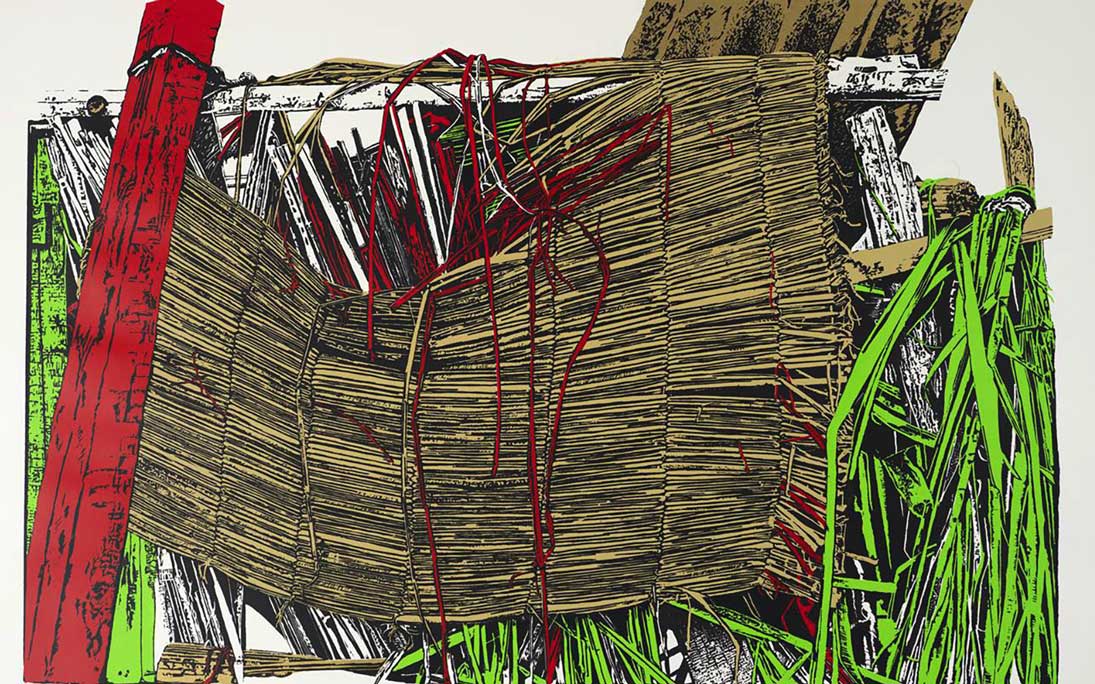
When, in November 1974, the Calouste Gulbenkian Foundation awarded Canadian artist, Renée Gagnon (Montreal, Canada, 1942), a 12-month scholarship, postponed a further six months due to safety concerns, to conduct her ‘documentary and visual research on the theme “Palisades of the Musseques of Luanda”’,[1] the artist had already begun her studies on the musseques two years previously and had lived and exhibited in Luanda and Lobito,[2] leaving Angola in March 1974. It was neither a novelty nor an innocent risk. But the desire to return to Luanda and go into the musseques freely was her main objective. Renée Gagnon returned to Angola as a scholarship holder in the middle of the civil war.
In a detailed depiction of streets and lanes, paths and alleyways, as well as windows, doors, palisades, and even the inside of the musseques themselves, Renée captured, through thousands of photographs, authentic sociological, but also artistic, documents, the use of geometric motifs and colour on the palisades (bare walls), and the meticulous decoration of these fragile constructions that fascinated the artist.
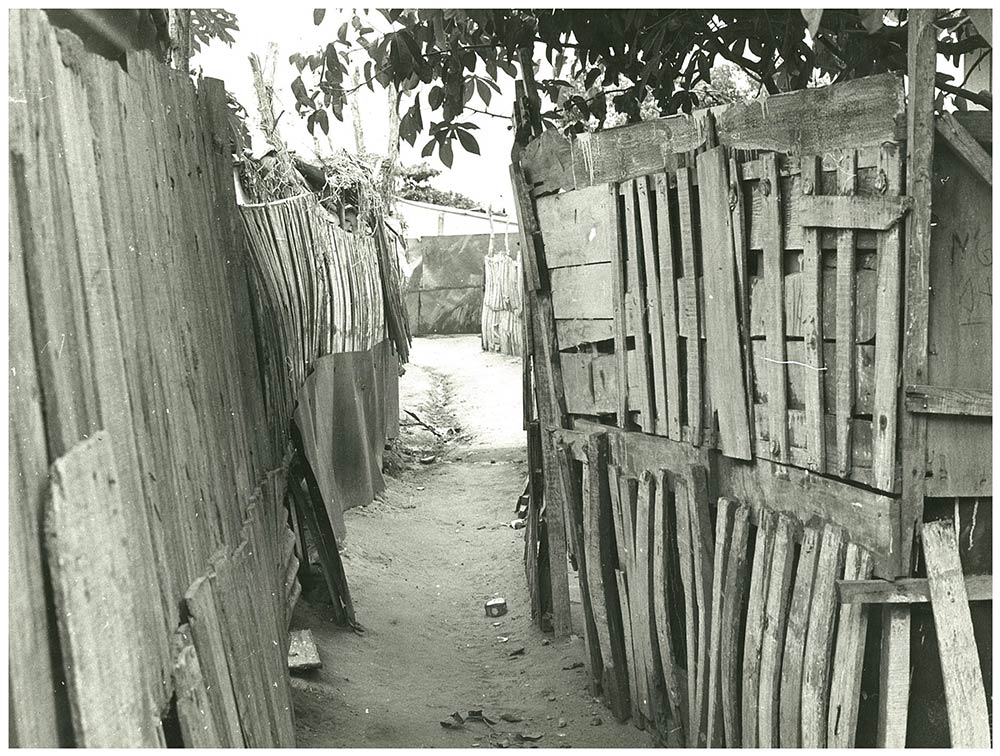

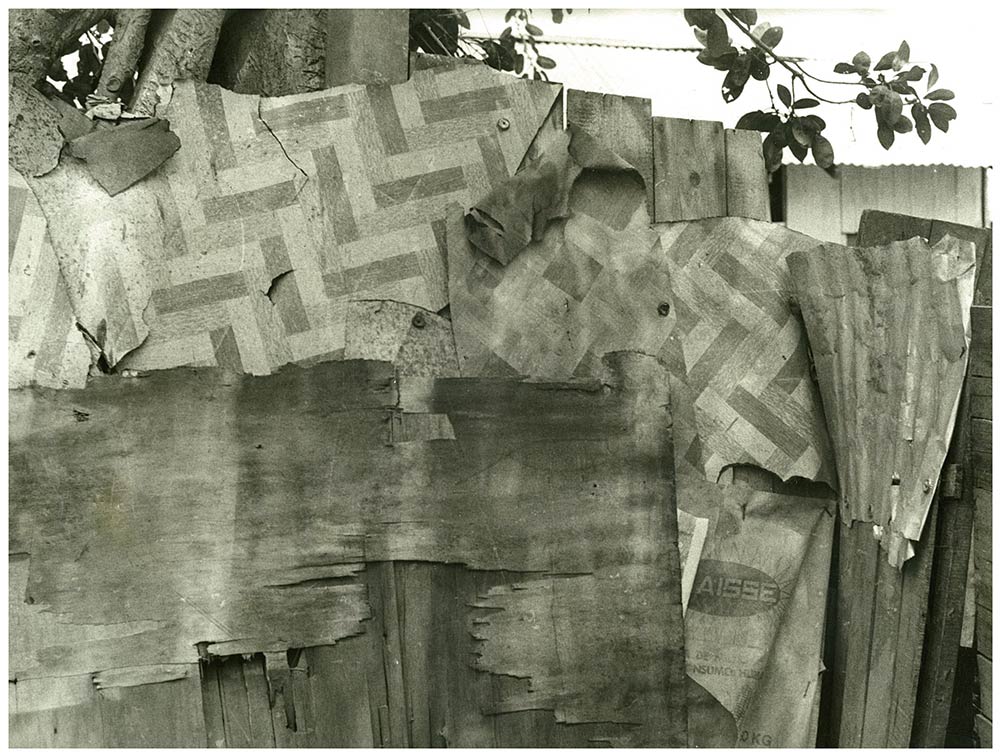
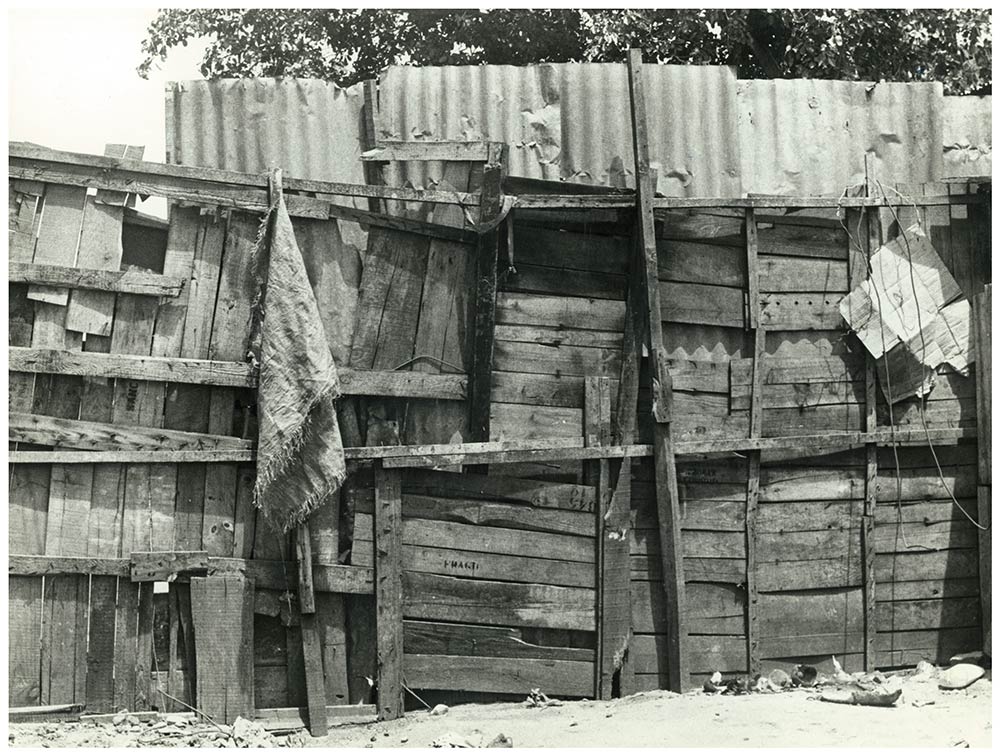
The musseques of Luanda were built with a wide range of recovered materials which gave them consistency and resistance but, at the same time, a fragile and precarious appearance: wine barrels, jerry cans, wooden beer crates, sheets of graphic art, cardboard, paper, plastic, branches, cloth, sticks and mud mixed with clay, cement, sand and the occasional brick.
In May 1980, in the catalogue of the exhibition Musseques. Pintura e Gravura Renée Gagnon [Musseques: Painting and Prints by Renée Gagnon], held at the National Museum in Luanda, Nuno Portas refers to this work on the musseques not only as truly abstract compositions, but also as a record and memory of the ‘marks of a people, of their condition and struggle for freedom in images (…); their architectural memories, memories of the extraordinary ingenuity (and skill) of the anonymous builders of wattle and daub, plaited tin and nailed boards’.[3]
The complete series of eleven silk-screen prints on the musseques, created by Renée Gagnon between 1976 and 1980, have belonged, since the middle of last year, to the collection of the Modern Art Centre. Almost the entire set was acquired last year – the CAM Collection previously had only the first work of the series entitled Musseques. All the silk-screen prints, made by the artist, who by this point was highly skilled in this technique, were printed at Gravura – the Portuguese Printmakers’ Cooperative and in the studios of printmaker António Inverno. They are: Muro da Alegria [Wall of Happiness] (1976), Elogio do Lixo [Praise of Rubbish] (1976), Ordem para a Guerrilha [Order for the Guerrillas] (1977), Muro da Dança [Wall of Dance] (1978), Lata [Tin], Tábua [Board] and Esteira [Mat] from 1978, these last three representing the basic materials of the musseques; Depois da Noite [After the Night] (1978), Porta da Serenidade [Door of Serenity] and Criar [Create] (1980), the latter about a poem by Agostinho Neto.
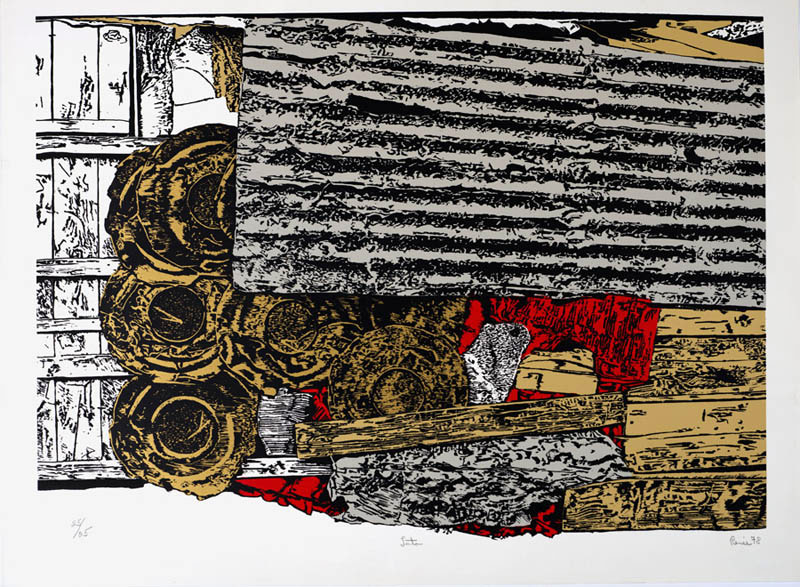

These pieces incorporate a work of serigraphic technique, in which colour gains strength, prevalence and vibration and fills the support almost entirely. It is the warm colours that stand out: reds, yellows, oranges and pinks, but we also find green, blue, black, grey and white, which outline, fill, sketch and highlight details of the musseques, or of the materials used there. However, the reflection of the people who built the musseques is also present. In 1971, the population of the musseques numbered 200,000 inhabitants and was located in areas within Luanda’s city centre. It was the rural population in particular which moved to the city and occupied this area.
The origin of the word musseque comes from Kimbundu, a dialect spoken in the regions closest to Luanda, and it means sand or red earth. ‘This was the most common description of the geological condition that characterised the type of areas where the first musseques were located.’[4] The most common types of housing in these neighbourhoods, according to building material, were mud houses, wattle and daub houses, adobe houses and houses of wood and zinc. The living and sanitary conditions were very precarious, as Renée Gagnon herself described in some detail in an article published in 1976 in Colóquio-Artes,[5] accompanied by some of her photographs in black and white, which remain unseen, unpublished and unexhibited.
Patrícia Rosas
Curator at CAM
[1] Proc. C. 200/73, 26 November 1974. Gulbenkian Archives.
[2] In March 1973, she exhibited the first palisades at Lobito Town Hall.
[3] Musseques. Pintura e Gravura Renée Gagnon, Luanda, International Salon, 1980, n/p.
[4] Andrea Bettencourt, Qualificação e reabilitação de áreas urbanas críticas. Os musseques de Luanda (Master’s Thesis in Architecture), Lisbon, FAUTL, July 2011.
[5] Renée Gagnon, ‘Les Musseques de Luanda ou la civilisation du déchet version africaine’, Lisbon, Colóquio-Artes, 18, no. 26, Feb 1976, p. 43-51.